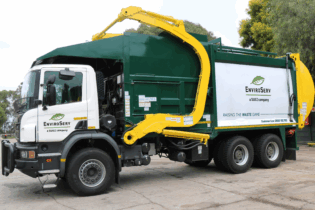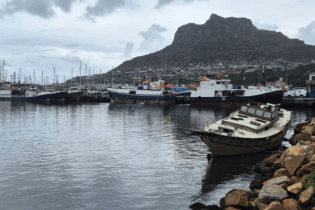The wet flue gas desulphurisation system being installed at Kusile power station by the Cosira Group/Alstom consortium is the first of its kind in South Africa – it will dramatically reduce the sulphur dioxide (SO2) content from the power plant’s flue gases.
Wet flue gas desulphurisation plant for Kusile SO₂ exists in flue gases as a result of burning fossil flues during power generation and is the foremost contributor towards acid rain. “While wet flue gas desulphurisation (WFGD) has been a popular choice for flue gas scrubbing on the international market, South Africa has chosen, until now, to utilise other methods of decreasing sulphur dioxide from gas emission. Although other methodologies exist to reduce SO₂ from flue gas emissions, advanced proven technology such as wet flue gas desulphurisation processes are adopted to improve on the limits set by international committees,” says John da Silva, CEO of the Cosira Group. According to the group’s WFGD project director, Richard de Arruda, WFGD has been a popular choice for fossil-fuelled power stations for over 25 years in Europe and the United States, and the technology is set to become a standard in developing countries as awareness of its benefits increases. “There is no doubt that WFGD is the preferred environmentally friendly choice as it removes at minimum 95% of SO2 gases from the emissions,” he says. Emission control The COP 17 conference held last year pinpointed a number of critical issues that need to be addressed to ensure compliancy. In many instances, project funding is attached to compliance to insure that climate-changing emissions are keep to the acceptable levels as prescribed by the committees. De Arruda explains that sophisticated sensors interconnected with the WFGD plants control systems continually record fuel gas emissions. These sensors provide the control systems with accurate monitoring information necessary to ensure that emissions are kept to the performance levels of the plant. Should emissions exceed the acceptable levels, alarms will trigger control mechanisms that adjust the plants’ inputs in order to correct the levels. “We are proud to be a part of the precedent-setting initiative at the Kusile power station in terms of reducing greenhouse gases and improving South Africa’s carbon footprint. We are confident that its success will open the doors for upgrading industries other than power generation in the future,” Da Silva concludes.About Kusile
Kusile is a coal-fired power station close to the existing Kendal power station in the Delmas municipal area of Mpumalanga. It is the second most advanced coal-fired power plant project in Eskom after the Medupi power station in Lephalale, where construction commenced in 2007. The station will consist of six units, each rated at approximately 800 MW installed capacity giving a total of 4 800 MW. Once complete, it will be one of the largest coal-fired power stations in the world. The coal for the power station will be supplied by a new colliery near the power station. Anglo Coal South Africa has committed, in a letter of intent, to supply 17 Mt of coal, over a period of 47 years, through its empowerment subsidiary Anglo Inyosi Coal. Another interesting aspect to this project is that Kusile will be the first power station in South Africa to have flue gas desulphurisation installed. Eskom is fitting the WFGD to the Kusile plant as an atmospheric emission abatement technology – in line with current international practice – to ensure compliance with air quality standards, especially since the power station is located in a priority airshed. The WFGD plant is a totally integrated chemical plant using limestone as feedstock and producing gypsum as a by-product. Gypsum is used in the manufacture of dry walls and ceilings. The first unit is planned for commercial operation in 2014. The other units will be commissioned in approximately eight-month intervals with the last unit expected to be in commercial operation by 2018. To date, the project is still on schedule to meet the target date.






